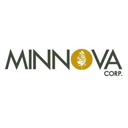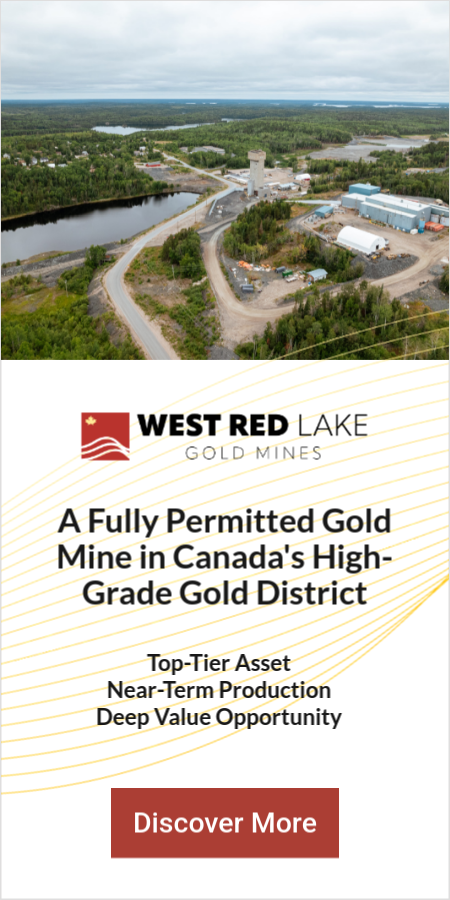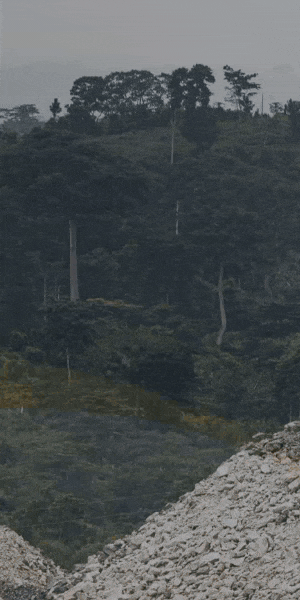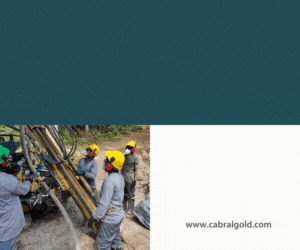Minnova Corp's 24-Month Path to Gold Production With Existing Mill and Permits Amid Bull Gold Prices
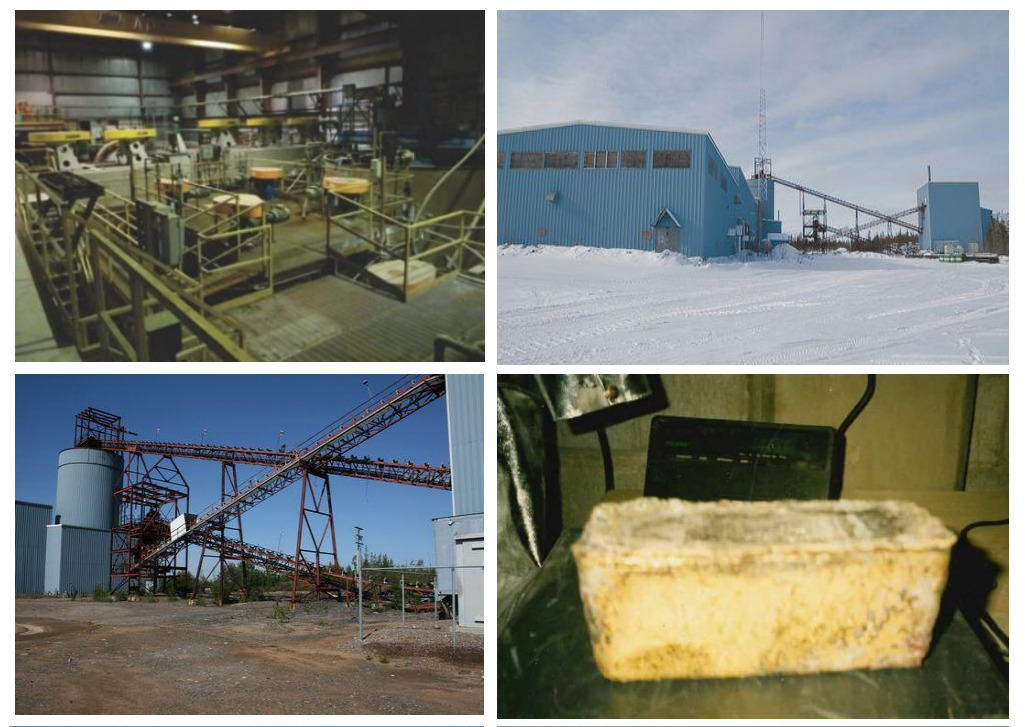
Minnova pivots to open-pit mining at PL Gold Mine with existing mill, targeting production by 2027-28 at 1,000 TPD. Updated studies due Q1-Q3 2026 as gold above $4,000/oz.
- Minnova Corp is transitioning from its 2017 underground mining feasibility study to an open-pit development strategy at the PL Gold Mine in Manitoba, targeting full utilization of its existing 1,000-ton-per-day mill from day one and production by late 2027 or early 2028.
- The company's existing infrastructure - including a mill requiring only $15-20 million in refurbishment, owned power lines, and major permits still in place - provides an estimated $50-75 million advantage over peer projects that must build processing facilities from scratch.
- With gold prices rising from $1,250 per ounce (used in the 2017 feasibility study) to now above $4,000, the project's economics have transformed dramatically, with the previous underground scenario showing a 300% after-tax IRR at $2,500 gold - metrics that should improve further with the lower-cost open-pit approach.
- Current drilling initiated in September 2025 has intersected visible gold in mineralized structures outside the existing resource estimate, while infill drilling aims to upgrade resource categories from inferred to measured and indicated for the Q1 2026 preliminary economic assessment and Q3 2026 updated feasibility study.
- The company has attracted its first Australian institutional shareholder and interest from European and US investors, signalling broadening market validation for a near-term production timeline that differentiates Minnova from earlier-stage exploration plays in an improving but still selective financing environment.
The gold mining sector has experienced a fundamental shift in 2024-2025, with gold prices reaching unprecedented levels and creating new economic viability for projects that were previously marginal. Minnova Corp (TSXV:MCI), a junior gold development company focused on restarting the past-producing PL Gold Mine in northern Manitoba, represents a compelling case study in how higher commodity prices can transform development economics. Under the leadership of President and CEO Gord Glenn, the company has pivoted from its original underground mining strategy to an open-pit development approach that promises lower capital costs, reduced operational risk, and a faster path to production.
The PL Gold Mine, which operated briefly in the late 1980s, offers something increasingly rare in the junior mining space: existing infrastructure, permitted assets, and a clear pathway to cash flow generation. Glenn explains, the project now benefits from circumstances that simply didn't exist during previous market cycles:
"At current gold prices, the project looks even better and we've got a new development plan to restart the mine as an open pit development initially and then go underground."
For investors evaluating opportunities in the gold sector, Minnova presents a risk-adjusted proposition that differs materially from grassroots exploration plays while maintaining significant upside potential through resource expansion.
The Evolution from Underground to Open-Pit Development
The strategic pivot to open-pit mining represents the most significant development in Minnova's corporate evolution. The company's 2017 feasibility study, completed when gold traded at $1,250 per ounce, contemplated an 800-ton-per-day underground operation producing approximately 46,000 ounces annually over a five-year reserve life. While technically viable, the project struggled to attract financing in a market environment where investors favoured larger-scale operations with higher production profiles.
The transformation in gold prices - from $1,250 to levels above $4,000 - has fundamentally altered the project economics. Glenn articulates this clearly:
"Obviously at higher gold prices we were looking to update our existing out-of-date mineral resource estimate and bring it current with at the higher gold price. So like our peer group we would expect to see an increase in overall resource ounces and that'll contribute to a better production development decision."
The open-pit strategy offers several compelling advantages. First, it enables the company to utilise the mill's full 1,000-ton-per-day nameplate capacity from day one, rather than the 800 tons per day contemplated in the underground scenario. Second, it significantly reduces development timeline and capital intensity compared to underground operations. Third, it allows for higher strip ratios that would have been uneconomic at lower gold prices but are now attractive given current commodity valuations.
Glenn emphasizes the geological rationale for this approach:
"The mineralized structures do come to surface. They project up through a lineament swampy area effectively. So they can be open-pitable. In post-2017 feasibility study we identified the PL North trend or target area which is effectively an extension of the main PL deposit and has not been included in any of the resource. We've been drilling it on and off for about five years up until 2021."
The technical work supporting this strategy has progressed rapidly. Minnova engaged A&B Global Mining, a South African engineering firm with extensive experience in both open-pit and underground operations, particularly in shallow-dipping narrow-vein deposits similar to PL.
Infrastructure Advantages and Capital Efficiency
One of Minnova's most significant competitive advantages relative to peer group companies lies in its existing infrastructure. The 1,000-ton-per-day mill, built during the original mining operation, remains on-site and in serviceable condition. This asset alone represents tens of millions of dollars in avoided capital expenditure and significantly accelerates the timeline to production.
Glenn provides specific details on the mill's status:
"The mill is in exceptionally good condition. Everything was shut down well. It's electrified in part for our purposes now. We have a condition assessment report that highlighted the refurbishment requirements required to get the mill up and running. It's more electrification of the mill, new electrical wiring, some upgraded process components, some upgraded equipment, but nothing major."
The cost estimate for mill refurbishment has been updated to reflect current market conditions. While the 2017 feasibility study contemplated $10 million in refurbishment costs, inflation and time have increased this figure to an estimated $15-20 million. Importantly, much of this expenditure can be incorporated into the overall project financing package rather than requiring separate pre-production equity dilution.
The company also owns critical supporting infrastructure, including a power line connected to Manitoba's electrical grid. This power line sustained minor damage during 2025 wildfires - losing a couple of poles - but remains fundamentally intact and can be refurbished and re-energized relatively quickly and inexpensively. Access to low-cost Manitoba renewable hydroelectric power represents another competitive advantage that directly impacts operating cost structures.
The proximity of infrastructure to the proposed open pit further enhances project economics. Unlike many peer companies developing open-pit deposits located 100 kilometers or more from processing facilities - or requiring toll milling arrangements - Minnova's mill sits just 200-300 meters from the planned open pit. This eliminates substantial haulage costs and logistical complexity while enabling real-time optimization of mining and processing operations.
Interview with President & CEO Gord Glenn
Technical Program and Resource Expansion
Minnova's current technical program encompasses multiple objectives designed to support the updated economic studies and demonstrate resource growth potential. The company initiated drilling in September 2025, with a program focused on both resource expansion and infill drilling to upgrade resource categories. Glenn notes:
"As part of the press release from late October we did announce that we have been intersecting targeted mineralized structures at targeted depths with in some cases visible gold on those in those intercepts. And again all of that is outside of the resource as it currently stands."
The presence of visible gold in drill core provides immediate geological confidence, though assay results will ultimately determine grade and economic significance. The company is currently shipping samples regularly to laboratories, with results expected to flow in coming weeks and months.
Beyond resource expansion, the program includes infill drilling designed to upgrade resource confidence levels.
The company also plans to conduct metallurgical test work using large-diameter PQ core samples rather than bulk sampling from an open pit. This approach offers efficiency advantages while building on substantial historical data. The original operation accumulated 14 months of mill production data demonstrating recoveries up to 90% using 1980s technology. Modern processing techniques and equipment should enhance these results.
Glenn outlines the metallurgical program:
"We'll look at basic process flowsheet work plus more modern sorting technologies. We'll also look at new modern gravity recovery technologies like Falcon concentrators, the type of centrifugal gold recovery techniques that are efficient at recovering fine-grain gold and we do have visible gold, we got nuggety gold, we got fine gold."
Economic Framework and Financing Strategy
The preliminary economics of the revised development plan appear compelling, though investors should await the Q1 2026 PEA and updated MRE for detailed modeling. The 2017 feasibility study, based on underground mining at $1,250 gold, generated a 300% after-tax internal rate of return at a $2,500 gold price assumption. The open-pit strategy, with its lower capital intensity and operating costs, should improve these metrics further.
This phased approach allows Minnova to minimize equity dilution during the study phase while positioning the project for larger-scale debt and equity financing once the feasibility study demonstrates robust economics. The company completed a small financing in summer 2025 that brought in its first institutional shareholder from Australia, signalling growing institutional interest in the story. Glenn describes the market reception:
"The Australians tend to have a greater appetite for development stories like PL than some of the Canadian institutional investors. Again not concerned about the size and the scale of the deposit, more interested in timeline to production, relatively short, existing infrastructure, existing permits."
The emergence of new investor classes represents an important validation of the investment thesis. The company has also attracted interest from European and US-based investors previously absent from the shareholder base. This geographic diversification of the investor base suggests the story is resonating beyond traditional Canadian junior mining circles.
Production Timeline and Development Milestones
Minnova has established a clear timeline for advancing the PL Gold Mine from current studies through to production. The company targets Q1 2026 for completion of the preliminary economic assessment and updated mineral resource estimate. This will be followed by a full feasibility study to be completed by Q3 2026. Glenn outlines the subsequent steps:
"By then I would hope that we'd be in a position to finance and restart the mine. So from a timeline and how do we go from development stage to operations, we're really talking about 12 months of engineering design work, PEA, feasibility study, and then mine finance and development to be in production late 2027 or early 2028."
This 24-30 month timeline from current status to production represents a relatively compressed development schedule in the mining industry. The existing permits and infrastructure enable this accelerated pathway. The open-pit development strategy further reduces timeline risk compared to underground operations, which face greater technical and operational constraints during ramp-up.
Glenn acknowledges this historical challenge while emphasizing that modern approaches should improve outcomes:
"When one of the reasons the mine closed back in the 80s was the grade that was going into the mill was well below the plan. The feasibility study from 1987 called for a 7.2 g/t mill head grade, like a diluted run of mine grade of 7g/t. They were delivering to the mill something half that at 3.5 g/t."\
The company's previous feasibility study contemplated a 12-15 month development timeline, which Glenn believes remains valid and may even be shortened given the simpler open-pit approach. The ability to open multiple sections of the pit simultaneously and target higher-grade starter zones provides operational flexibility during the critical early production period.
Market Position and Financing Landscape
The existing infrastructure represents perhaps the most significant differentiator. While many competing projects face capital requirements of $100 million or more just for mill construction and supporting infrastructure, Minnova's infrastructure position effectively provides a $50-75 million head start relative to grassroots developments.
The advanced permitting status provides another advantage, making the near-term production timeline distinguishes Minnova from earlier-stage exploration companies. While exploration plays offer potential for resource discovery and dramatic revaluation, they also carry higher risk and longer timelines. Minnova's 24-30 month path to production appeals to investors seeking exposure to gold prices through near-term cash flow generation rather than long-dated exploration optionality.
Glenn positions the company explicitly within this context:
"There's good interest. What we found from the groups that we've been talking to who are obviously very experienced in looking at projects and assessing their relative robustness—what they see with our revised open-pit development plan is a very robust project that can handle the debt and pay back quickly."
The open-pit development strategy specifically appeals to project financiers, according to Glenn:
"Everybody that we've spoken to so far is very interested in the de-risking of the project by going open pit at a higher throughput rate. They like the margin, right? Open pit is typically lower operating cost, less risk, and shorter timeline to production than a comparable underground operation."
The broader capital markets environment for junior mining has shown signs of improvement alongside higher gold prices, though funding remains selective. Minnova's summer 2025 financing, while modest in scale, demonstrated investor appetite for near-term production stories with existing infrastructure.
The emergence of non-traditional funding sources represents an important trend in the sector. Glenn references the changing landscape:
"We've seen some quite unusual entrance into the market. People like Tether coming in and trying to grab physical gold where they can. We've seen lenders on project financing stepping up again, equipment providers stepping up again with gold price doing what it's doing—there's a bit more margin."
This diversification of funding sources beyond traditional mining-focused institutions expands the potential capital pool available for project development. Equipment financing, streaming arrangements, and alternative credit facilities provide optionality beyond conventional project debt and equity raises.
The Investment Thesis for Minnova Corp
- Near-term production profile: With a 24-30 month timeline to production from current status, Minnova offers investors relatively rapid exposure to gold price leverage compared to early-stage exploration companies or larger projects with multi-year development timelines.
- Infrastructure advantage: The existing 1,000-ton-per-day mill and supporting infrastructure significantly reduces capital requirements compared to peer projects requiring new processing facilities, effectively providing $50-75 million in embedded value.
- Gold price leverage: The project demonstrates exceptional sensitivity to gold prices, with 2017 feasibility study economics showing 300% after-tax IRR at $2,500 gold using the less favorable underground scenario; open-pit economics should enhance these metrics.
- Resource expansion potential: Ongoing drilling continues to intersect mineralized structures with visible gold outside current resource boundaries, supporting potential for reserve and resource growth beyond current technical studies.
- Reduced development risk: The open-pit strategy offers lower operational risk, shorter development timelines, and more straightforward mining compared to underground operations, addressing a key concern of project financiers.
- Existing permits: Major permits remain in place from the original operation, reducing permitting timeline risk and regulatory expenditures that can derail development projects.
- Strategic location: Access to low-cost Manitoba hydroelectric power and existing transportation infrastructure reduces operating costs and supports favorable project economics.
- Experienced management: The management team has maintained the project through multiple market cycles and has adapted the development strategy to optimize for current market conditions.
- Institutional validation: The entry of Australian institutional investors and interest from European and US investors suggests the investment thesis is resonating beyond traditional Canadian junior mining circles.
- Phased capital approach: The company's strategy of phasing capital requirements—studies first, infrastructure refurbishment next, full project financing last—allows investors to evaluate de-risked economics before major capital commitments.
Macro Thematic Analysis: The Open-Pit Renaissance in Junior Gold Development
The resurgence of open-pit mining strategies among junior gold developers represents one of the most significant shifts in the sector's development playbook over the past two years. Historically, many high-grade narrow-vein gold deposits were developed exclusively through underground methods, reflecting both lower gold prices that rewarded selective mining of higher-grade zones and capital markets that were willing to fund longer-payback underground developments. The sustained elevation of gold prices above $4,000 per ounce has fundamentally altered this calculus.
Open-pit mining offers compelling advantages that align perfectly with the current capital markets environment. Lower operating costs per tonne, simplified logistics, reduced technical risk, and shorter development timelines all appeal to project financiers and equity investors who have become increasingly risk-averse following numerous high-profile underground project delays and cost overruns across the mining sector. The ability to mine larger tonnages at lower grades while maintaining economic viability at higher gold prices opens previously sub-economic deposits to development.
Looking forward, the sustainability of this open-pit renaissance depends primarily on gold price stability. However, the structural factors supporting elevated gold prices—including persistent inflation concerns, geopolitical instability, central bank buying, and currency diversification trends—suggest that the macro environment favorable to open-pit development may persist longer than previous gold price spikes. For junior developers with existing infrastructure and permitted assets like Minnova, the current macro environment represents an opportunity that may not recur if market conditions deteriorate.
TL;DR
Minnova Corp (TSXV:MCI) is advancing the past-producing PL Gold Mine in northern Manitoba toward production by late 2027/early 2028 using an open-pit mining strategy that leverages an existing 1,000-ton-per-day mill, in-place permits, and owned infrastructure. The shift from the 2017 underground feasibility study to open-pit development capitalizes on gold prices that have risen from $1,250 to above $4,000 per ounce, transforming project economics that previously showed a 300% after-tax IRR at $2,500 gold. With only $15-20 million required for mill refurbishment versus the $100+ million peers spend building new facilities, Minnova holds a $50-75 million infrastructure advantage. The company has engaged A&B Global Mining for a Q1 2026 preliminary economic assessment and Q3 2026 feasibility study, while ongoing drilling intersects visible gold outside current resources.
Recent financings brought the first Australian institutional investor and new European/US interest, validating the 24-30 month production timeline. Open-pit mining offers lower operating costs, reduced development risk, and simpler operations compared to underground mining, appealing to project financiers in an improving but selective capital environment. The mill sits just 200-300 meters from the planned pit, eliminating haulage costs, while access to low-cost Manitoba hydroelectric power supports favorable economics. Management expects production of 40,000-50,000 ounces annually at full 1,000-ton-per-day throughput, with resource expansion potential demonstrated through recent drilling and the PL North trend discovery.
Frequently Asked Questions (FAQs) AI-Generated
Analyst's Notes




Subscribe to Our Channel
Stay Informed










